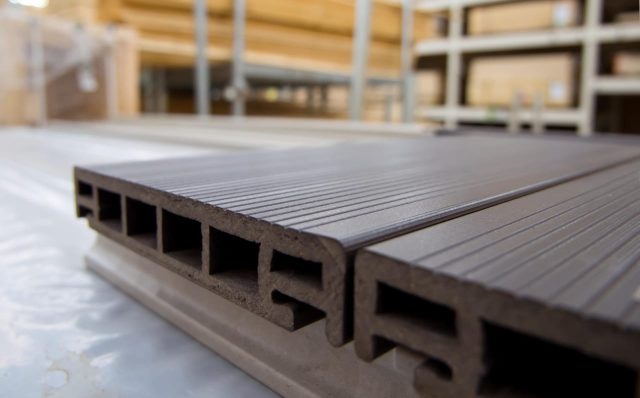Glass Reinforced Plastic (GRP) profiles and gratings have become indispensable components in various industries, offering a multitude of benefits across a wide range of applications.
From construction and architecture to manufacturing and infrastructure, GRP profiles and gratings play a pivotal role in enhancing structural integrity, durability, and aesthetics. However, for those unfamiliar with these versatile materials, understanding what GRP profiles and gratings really are and their myriad uses can be somewhat elusive. Let’s delve into the fundamentals of GRP profiles and gratings to shed light on their composition, characteristics, and applications.
What are GRP Profiles?
GRP profiles, also known as fibreglass profiles, are structural elements manufactured from a composite material consisting of glass fibres embedded in a matrix of resin. This combination results in a material that is lightweight, yet incredibly strong and durable. GRP profiles can be produced in various shapes and sizes, ranging from simple rods and tubes to complex profiles with intricate designs. These profiles find applications in a wide range of industries, including construction, transportation, marine, and aerospace.
Key Characteristics of GRP Profiles:
– Strength and Durability: Despite their lightweight nature, GRP profiles boast exceptional strength and durability, making them suitable for demanding applications where traditional materials may fail.
– Corrosion Resistance: GRP profiles are inherently resistant to corrosion, making them ideal for use in harsh environments exposed to chemicals, moisture, and saltwater.
– Versatility: GRP profiles offer versatility in design, allowing for the creation of complex shapes and configurations to meet specific project requirements.
– Low Maintenance: GRP profiles require minimal maintenance, as they are resistant to rot, rust, and degradation, resulting in long-term cost savings.
Applications of GRP Profiles:
– Architectural Features: GRP profiles are commonly used in architectural applications such as decorative mouldings, cladding panels, and column covers, adding aesthetic appeal to buildings while offering durability and weather resistance.
– Infrastructure: In the infrastructure sector, GRP profiles are employed in bridge components, railings, and drainage systems, where their corrosion resistance and high strength-to-weight ratio are advantageous.
– Transportation: GRP profiles find applications in the transportation industry for manufacturing components such as bus shelters, train interiors, and vehicle body panels, where lightweight materials are desirable for fuel efficiency and performance.
– Utilities: GRP profiles are utilised in the construction of utility enclosures, cable trays, and access platforms, providing lightweight, corrosion-resistant solutions for housing and protecting essential infrastructure.
What are GRP Gratings?
GRP gratings also referred to as fibreglass gratings, are open-mesh structures fabricated from glass fibres and resin. These gratings are renowned for their lightweight, yet robust construction, offering superior strength and durability compared to traditional materials such as steel or timber. GRP gratings are widely used in applications where corrosion resistance, slip resistance, and ease of installation are paramount.
Key Characteristics of GRP Gratings:
– Corrosion Resistance: GRP gratings are immune to corrosion, making them suitable for use in corrosive environments such as chemical plants, offshore platforms, and wastewater treatment facilities.
– Slip Resistance: GRP gratings feature a slip-resistant surface, enhancing safety in areas prone to wet or oily conditions, such as industrial floors, walkways, and platforms.
– Lightweight Construction: GRP gratings are lightweight and easy to handle, transport, and install, reducing labour costs and simplifying installation procedures.
– Fire Resistance: GRP gratings are inherently fire-resistant, offering peace of mind in applications where fire safety is a concern.
Applications of GRP Gratings:
– Industrial Flooring: GRP gratings are commonly used as industrial flooring in factories, chemical plants, and offshore installations, providing a durable and slip-resistant surface for workers.
– Marine Structures: In the marine industry, GRP gratings are employed in dockyards, marinas, and offshore platforms, where their corrosion resistance and low maintenance requirements make them an ideal choice for walkways, gangways, and decks.
– Water Treatment Plants: GRP gratings are utilised in water treatment plants and wastewater treatment facilities for walkways, platforms, and trench covers, offering corrosion resistance and long-term durability in harsh chemical environments.
Conclusion:
GRP profiles and gratings are versatile materials with a wide range of applications across various industries. Their unique combination of strength, durability, corrosion resistance, and lightweight construction makes them indispensable in modern construction and engineering projects. By understanding the characteristics and applications of GRP profiles and gratings, designers, engineers, and builders can harness the full potential of these innovative materials to create safer, more durable, and aesthetically pleasing structures and infrastructure.
Apart from that, if you are interested to know about “4 Things That Cause Clogs” then visit our CRAFTS AND TOOLS category.









